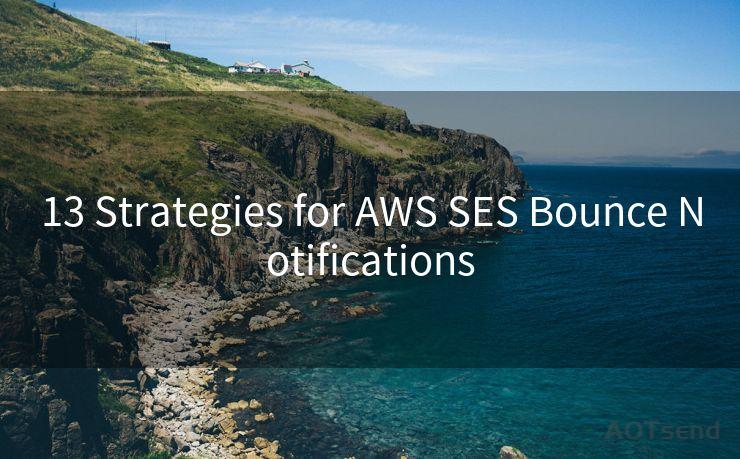13 Strategies for AWS SES Bounce Notifications




When it comes to email marketing and bulk emailing, bounce notifications are a common occurrence. Amazon Web Services (AWS) Simple Email Service (SES) provides a robust platform for sending and receiving emails, but even the best systems can encounter bounces. Here are 13 strategies to help you effectively manage AWS SES bounce notifications.
1. Understanding Bounce Types
The first step is to understand the different types of bounces. There are hard bounces and soft bounces. Hard bounces occur when an email address is invalid or doesn't exist, while soft bounces happen due to temporary issues like a full mailbox or server problems.
2. Monitoring Bounce Rate
Regularly monitor your bounce rate. A high bounce rate can affect your SES sender reputation, potentially leading to deliverability issues. Use AWS CloudWatch metrics and alarms to stay alert.
3. Analyzing Bounce Notifications

AWS SES sends bounce notifications to a specified SNS topic or an SQS queue. Analyze these notifications to identify patterns and common reasons for bounces.
4. Managing Email Lists
Keep your email lists clean and up-to-date. Remove invalid or inactive email addresses promptly to reduce bounce rates.
5. Improving Email Content
Ensure your email content is engaging and relevant to reduce the chance of recipients marking your emails as spam, which can indirectly affect bounce rates.
6. Testing Email Deliverability
Regularly test your emails for deliverability using tools like MailTester or Email on Acid. This helps identify potential issues before sending bulk emails.
7. Handling Complaints Promptly
Monitor and address complaints promptly. Too many complaints can hurt your SES reputation and increase bounce rates.
8. Validating Email Addresses
Use double opt-in methods to validate email addresses and ensure they are active and belong to real users.
9. Segmenting Email Lists
🔔🔔🔔
【AOTsend Email API】:AOTsend is a Managed Email Service for sending transactional emails. Support Email Types: reminders, authentication, confirmations, notifications, verification codes, invoices, password resets, account activations, billing statements, two-factor authentication (2FA), and one-time passwords (OTP) emails, etc. $0.28 per 1000 Emails. 99% Delivery, 98% Inbox Rate.
You might be interested in:
Why did we start the AOTsend project, Brand Story?
What is a Managed Email API, How it Works?
Best 25+ Email Marketing Platforms (Authority,Keywords&Traffic Comparison)
Best 24+ Email Marketing Service (Price, Pros&Cons Comparison)
Email APIs vs SMTP: How they Works, Any Difference?
Segment your email lists based on engagement, demographics, or other criteria. This helps target the right audience and reduces the chances of emails being marked as spam or bouncing.
10. Throttling Email Sends
Don't send too many emails too quickly, as this can trigger spam filters. Throttle your email sends to avoid overwhelming recipient servers.
11. Monitoring Blacklists
Regularly check if your sending domain or IP address is blacklisted. Use tools like MX Toolbox to monitor your blacklist status.
12. Implementing Feedback Loops
Utilize feedback loops provided by ISPs to identify and remove complainants from your email lists promptly.
13. Staying Updated with SES Policies
AWS SES policies and best practices evolve. Stay updated to ensure compliance and maintain a good sender reputation.
By following these 13 strategies for handling AWS SES bounce notifications, you can improve your email deliverability, protect your sender reputation, and ensure a better experience for your email recipients. Remember, a proactive approach to bounce management is key to successful email marketing campaigns.




Scan the QR code to access on your mobile device.
Copyright notice: This article is published by AotSend. Reproduction requires attribution.
Article Link:https://www.mailwot.com/p1616.html



